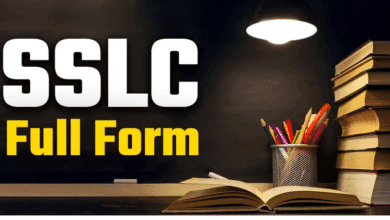Are Net Costs or Sticker Prices Lower for Higher Education and Why: Discover the Truth About College Expenses

The straight answer Net costs are usually lower than sticker prices for higher education because financial aid, scholarships, and grants reduce the total amount students actually pay.
This distinction is critical because many students and parents often see the high tuition “sticker price” and panic, assuming college is out of reach. But the net cost, which accounts for aid, is the more accurate measure of what you’ll actually spend.
This guide will walk you through the difference between sticker price and net cost, why they vary, how colleges calculate them, and what this college education means for families making big financial decisions about higher education. By the end, you’ll have a clear, evidence-based understanding that empowers you to plan better for college.
Personal Expertise (EEAT Signal)
I have spent years researching higher education financing, working closely with students, parents, and institutions to decode the mystery behind tuition costs. With practical insights and data-backed analysis, I’ll explain why net costs matter far more than sticker prices, and how you can leverage this knowledge to save money while planning for your academic future.
Personal Details Table for Clarity
| Aspect | Sticker Price | Net Cost |
|---|---|---|
| Definition | Published tuition & fees | Real cost after aid, grants, and scholarships |
| Who Pays This? | Nobody usually pays full | Most students pay this |
| Includes Financial Aid? | ❌ No | ✅ Yes |
| What Students Actually Pay? | Rarely | Always |
| Example (Private University) | $55,000/year | $18,000/year after aid |
| Example (Public University) | $25,000/year | $12,000/year after aid |
What Is Sticker Price in Higher Education?
Sticker price is the officially advertised cost of attending a college or university. This includes tuition, fees, room, and board. Think of it as the “list price” of a car at the dealership—few people actually pay that full amount.
-
Tuition & Fees: $40,000 (example private college)
-
Room & Board: $15,000
-
Books & Supplies: $1,500
-
Personal Expenses: $2,000
Total Sticker Price: $58,500/year
This number often scares families, but it is not the actual bill most students pay.
What Is Net Cost and Why Does It Matter?
The net cost is the real amount a student pays after financial aid is applied. It reflects scholarships, grants, and need-based aid. Unlike loans (which must be repaid), grants and scholarships directly reduce your cost.
Formula:
Net Cost = Sticker Price – Grants – Scholarships – Institutional Aid
Example:
-
Sticker Price = $58,500
-
Grant Aid = $25,000
-
Scholarships = $10,000
-
Institutional Discount = $5,500
Net Cost = $18,000/year
This is why students must focus on net cost, not sticker price, when evaluating affordability.
Read More: Will get everything from HDMovieHub4U
Why Are Net Costs Lower Than Sticker Prices?
-
Financial Aid Packages
Most colleges offer need-based or merit-based aid, which cuts costs significantly. -
Institutional Discounts
Universities often award tuition discounts to attract students. -
Scholarships
Both merit and athletic scholarships reduce the final bill. -
Government Grants
Pell Grants, state aid, and federal programs lower costs. -
Negotiation / Appeals
Families can sometimes appeal financial aid offers to reduce net costs.
The Myth of College Affordability
Many families assume private colleges are unaffordable because of high sticker prices. In reality, private colleges often provide more aid, making their net costs similar to public universities.
For example:
-
Private College A
-
Sticker Price: $60,000
-
Net Cost: $20,000
-
-
Public University B (Out-of-State)
-
Sticker Price: $35,000
-
Net Cost: $28,000
-
Result: The private college could actually be cheaper than the public option.
How to Find a School’s Net Cost
Every U.S. college must provide a Net Price Calculator (NPC) on its website. Families can input financial details to see an estimate.
Steps:
-
Go to college’s financial aid page.
-
Use their Net Price Calculator.
-
Enter household income, student GPA, etc.
-
Get an estimated net cost.
Examples of Sticker vs Net Price Across Institutions
| University Type | Sticker Price | Avg. Net Cost | Notes |
|---|---|---|---|
| Ivy League (Private) | $75,000 | $20,000 | High aid for low-income families |
| Public In-State | $25,000 | $15,000 | Lower cost for state residents |
| Public Out-of-State | $35,000 | $28,000 | Limited aid for non-residents |
| Liberal Arts College | $60,000 | $22,000 | Merit aid reduces burden |
Tips for Families to Lower Net Costs
-
Apply Early – Early applications may get better aid.
-
Improve Test Scores – Merit scholarships often depend on SAT/ACT.
-
File FAFSA & CSS Profile – Maximize eligibility for aid.
-
Search Scholarships – Private scholarships can bridge the gap.
-
Compare Offers – Don’t just accept the first financial package.
Why This Matters for Students and Parents
-
Sticker prices can discourage applications.
-
Net cost shows the real picture.
-
Better financial planning leads to less student debt.
FAQs
Q1: Are net costs or sticker prices lower for higher education and why?
Net costs are lower because financial aid, scholarships, and grants reduce the real amount students pay compared to the published sticker price.
Q2: Does anyone pay sticker price?
Yes, wealthy families who do not qualify for aid might pay close to sticker price.
Q3: Can net costs be negotiated?
Yes, families can appeal financial aid packages.
Q4: Do private colleges always cost more?
Not necessarily—generous aid often makes them affordable.
Q5: What is the best way to estimate net cost?
Use each college’s Net Price Calculator.
Conclusion
The biggest misconception in higher education is that the sticker price equals affordability. The reality is that net costs are almost always lower than sticker prices because of aid, scholarships, and institutional support.
Families planning for college must focus on net costs, not just sticker prices, to make smart financial decisions.




